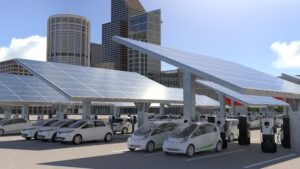I love that consumers and enterprises alike are making an effort to include environmental sustainability in their buying decisions. There was a day when we used to rely purely on marketing claims when assessing product sustainability. Over time, this led to many “greenwashing” lawsuits and so, today, more and more companies are more careful with their claims.
Comparing products is something we all do whether it’s at the grocery store, car dealership, clothing store, or online. Sometimes we get it right, and sometimes we fall short. We usually get it right when buying food or drinks in terms of its calories, carbs, fats, etc. because these products have standardized nutrition labels. When products have a standardized label, we have a decent shot of making an informed buying decision. The good news is that many commercial products do have environmental labels and sustainability declarations based on globally recognized standards. The bad news is we’re still in the early days and there’s a lot of room for improvement. With that said, I believe that making the best decision starts with educating yourself with some foundational information.

Three types of environmental labels
The International Organization for Standardization (ISO) has three main types of labels and declarations that it governs. Type I labels communicate that a particular product or service meets or exceeds specific environmental criteria set by an independent third-party organization. Energy Star is an example of a Type I label. Type II labels are like Type I labels, except that the claims are self-declared, meaning a product manufacturer can apply whatever claim they wish without third-party verification. And finally, there are Type III environmental product declarations (EPD) which summarize the environmental life cycle data of a product. Like the nutrition facts label you use for food purchases, EPDs help you make product decisions based on a product’s environmental sustainability impact over its life.
Mistakes to avoid with sustainability comparisons
While it’s great that most major manufacturers offer EPDs for their products, they don’t eliminate manufacturer mistakes or ensure valid comparisons. It’s still quite easy to choose a less sustainable product by incorrectly comparing EPDs from different manufacturers. Some key mistakes to watch out for include:
- Comparing the total carbon footprint without checking that the EPDs assess each life cycle stage the same way. There are five life cycle stages: manufacturing, distribution, installation, use, and end of life.
- Comparing the “use stage” carbon footprint when the EPDs use different emission factors. The emission factor is the amount of carbon emissions generated for every kilowatt-hour the product consumes. Comparing electric products with different emission factors is the biggest mistake because the electricity they consume over their lifetime likely represents over 90% of the total carbon footprint.
- Comparing EPD documents for the same product category but with different reference products. The reference product for one EPD could have a very different capacity rating than the other. For instance, you could potentially compare the carbon footprint for a 100 kW UPS against a 500 kW UPS. You must proportionally scale the values before comparing anything.
These are just a few of the mistakes made when comparing two or more EPDs. We understand that comparing products from a sustainability perspective is not as easy as it should be. That’s why we wrote the “Guide to Assess a Commercial Product’s Sustainability”. One day we hope it’s much easier, but until then, this guide helps you navigate the pitfalls.



